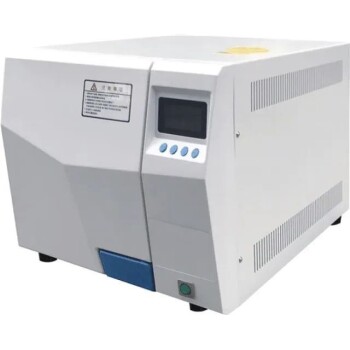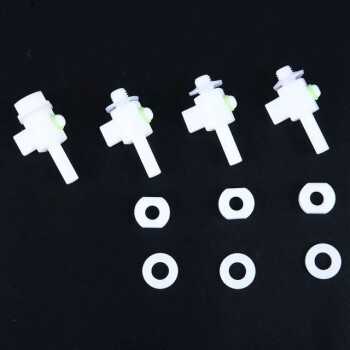When working with a vacuum pump, especially in environments involving highly toxic chemicals like chloroform, proper personal protective equipment (PPE) is essential to ensure safety. The PPE required depends on the chemicals being handled, the pump's setup, and the potential risks involved. Key considerations include protecting against chemical exposure, inhalation of toxic vapors, and physical hazards. Below is a detailed explanation of the PPE requirements and their importance.
Key Points Explained:

-
Respiratory Protection:
- Why it's needed: When handling toxic chemicals like chloroform, vapors can escape into the air, posing inhalation risks. Even if the pump is placed in a fume hood or vented, accidental exposure is possible.
- Recommended PPE: Use a respirator with appropriate filters (e.g., organic vapor cartridges) or a supplied-air respirator for highly toxic substances. Ensure the respirator is NIOSH-approved and fits properly.
- Additional Notes: If the pump is adequately vented or used in a fume hood, respiratory protection may not always be necessary, but it’s a good practice to have it available.
-
Eye Protection:
- Why it's needed: Chemical splashes or accidental leaks can cause severe eye injuries. Toxic vapors can also irritate the eyes.
- Recommended PPE: Wear chemical splash goggles or a full-face shield, especially when handling volatile or corrosive chemicals.
- Additional Notes: Regular safety glasses are insufficient for chemical protection; ensure the goggles or shield provide a tight seal.
-
Hand Protection:
- Why it's needed: Direct contact with toxic chemicals or contaminated pump components can lead to skin absorption or chemical burns.
- Recommended PPE: Use chemical-resistant gloves made of materials like nitrile, neoprene, or butyl rubber, depending on the chemical being handled.
- Additional Notes: Check the glove's compatibility with the specific chemicals in use and replace gloves if they show signs of wear or contamination.
-
Body Protection:
- Why it's needed: Spills or splashes can contaminate clothing and skin, leading to chemical exposure.
- Recommended PPE: Wear a lab coat or chemical-resistant apron made of materials like polyethylene or PVC. For highly toxic chemicals, consider a full-body suit.
- Additional Notes: Ensure the lab coat or apron covers all exposed skin and is removed immediately if contaminated.
-
Foot Protection:
- Why it's needed: Chemical spills can damage shoes and expose feet to hazardous substances.
- Recommended PPE: Wear closed-toe shoes with chemical-resistant soles, such as rubber boots or chemical-resistant safety shoes.
- Additional Notes: Avoid wearing fabric shoes or sandals in the lab.
-
Additional Considerations:
- Fume Hood or Ventilation: While not PPE, ensuring the pump is placed in a fume hood or vented to a dedicated exhaust system significantly reduces the need for extensive respiratory protection. This setup minimizes the release of toxic vapors into the lab environment.
- Condensers and Traps: Installing condensers and traps on the pump can capture toxic vapors, further reducing the risk of exposure. This engineering control complements PPE by addressing the hazard at its source.
- Training and Awareness: Proper training on the use of PPE and understanding the risks associated with the chemicals and equipment is crucial. Ensure all users know how to inspect, wear, and maintain their PPE correctly.
By combining appropriate PPE with engineering controls like fume hoods and condensers, you can create a safe working environment when using a vacuum pump with toxic chemicals. Always refer to the chemical's Safety Data Sheet (SDS) and consult with safety professionals to tailor PPE and safety measures to your specific application.
Summary Table:
| PPE Type | Purpose | Recommended Gear | Additional Notes |
|---|---|---|---|
| Respiratory | Protect against inhalation of toxic vapors | NIOSH-approved respirator with organic vapor cartridges or supplied-air respirator | Use in fume hoods or vented systems reduces need; keep respirator available |
| Eye Protection | Prevent chemical splashes or vapor irritation | Chemical splash goggles or full-face shield | Ensure a tight seal; regular safety glasses are insufficient |
| Hand Protection | Avoid skin absorption or chemical burns | Chemical-resistant gloves (nitrile, neoprene, or butyl rubber) | Check compatibility; replace contaminated or worn gloves |
| Body Protection | Shield against spills or splashes on skin and clothing | Lab coat, chemical-resistant apron, or full-body suit | Remove contaminated clothing immediately |
| Foot Protection | Protect feet from chemical spills | Closed-toe shoes with chemical-resistant soles | Avoid fabric shoes or sandals in the lab |
| Additional Tips | Enhance safety with engineering controls | Use fume hoods, condensers, and traps; ensure proper training | Refer to SDS and consult safety professionals for tailored measures |
Need help selecting the right PPE for your lab? Contact our safety experts today!







